
Private day tour in Uplistsikhe and Mtskheta from Tbilisi
1 day
About this activity
Itinerary
This is a typical itinerary for this product
Stop At: Jvari Church, Mtskheta Georgia
The tour begins with a visit to Jvari Church (6th -7th cc), the most important religious center and an architectural masterpiece of mediaeval Georgia. Enjoy breathtaking view from the church that towers over the city of Mtskheta.
The name Jvari means “cross” in Georgian language. It explains the ancient legend which says that it was there that St. Nino of Kappadokia put the Sacred Cross symbolizing the acceptance of Christianity by Georgia. Later over the cross the Temple of the Sacred Cross was built. It is worth mentioning that Small Jvari temple was built first (lying in ruins next to the main temple), and Big Jvari was erected afterwards for the purpose of preservation of the Sacred Cross relic. According to the ancient records the Cross was open to be seen from afar and was the object of worship until the 6 th century.
Duration: 30 minutes
Pass By: Stalin Museum, 32 Stalin Avenue, Gori Georgia
Optional tour: you can visit Stalin's museum in Gori city before visiting Uplistsikhe if you will request it.
Entrance fee to Museum of Stalin in Gori ( 5 USD per person ) (optional)
Stop At: Uplistsikhe, Georgia
10 km from Gori on the bank of the river Kura there stands one of the rarest monuments in the world – the ancient fortified city Uplistsikhe cut inside the volcanic rocks of the Kvernaki ridge. It was first mentioned in the annals of the 1st century BC and prospered in the 9th -10th centuries.
Even from afar this quaint rocky city looks bewitching. Looking like giant pores on the rocks gape the cave grottoes, which used to be full of life. Long time ago there were huge majestic halls, temples, dwellings connected by winding corridors of streets. It is hard to believe that this grandiose titanic creation of the whole city from stone was done by human hands.
Duration: 1 hour
Stop At: Samtavro Church, Davit Aghmashenebelis qucha, Mtskheta 383400 Georgia
In Mtskheta there is an active Samtavro convent (the 11 th century) in which the ruler Mirian and his wife Nana, the first to accept Christianity from St. Nino in 337, are buried.
The convent was constructed in 1820 instead of a small ancient wooden church of the 4 th century erected by the king Mirian. Its dome and some of the parts were reconstructed after the earthquake in the 13 th – 14 th centuries with addition of the sanctuary screen. The three-storied bell tower was built in the 15 th – 16 th centuries. The frescos there are dated the 16 th – the 17 th centuries. In the 17 th century the convent was renovated for the last time.
In the church yard there is the grave of St. Gabriel; one of the most esteemed Georgian saints. This place is always full of pilgrims and worshippers of the saint. In 1906 the monument to the king Mirian and queen Nana was built in the convent.
Duration: 30 minutes
Stop At: Svetitskhoveli Cathedral, Arsukidze, Mtskheta 383400 Georgia
Not far from Samtavro convent there is another cult monument of Christian Georgia – one of the major Orthodox Georgian temples – Svetitskhoveli Cathedral.It was built in the 11 th century (1010-1029) on the site of the Twelve Apostles Church, the first Christian Georgian church erected in the 4 th century. There is a religious legend, connected with this church origination, about Elioz, a citizen of Mtskheta, who found the Tunic of Jesus Christ in Jerusalem. Elioz's sister – Sidonia – died as soon as she touched the tunic. She was buried wrapped in it . Soon a big tree, cedar of Lebanan, grew on Sidonia's grave. When the ruler Mirian decided to build a temple on the place where the Tunic of the God was buried the cedar was cut down. They made seven columns from the tree and began to install them in the church. Six columns were in place but the seventh was not; it was hanging in mid-air. The Baptist of Georgia, St. Nino prayed all night long and then the column “without a touch of a human hand” froze on its place and … started shedding holy ointment. The miraculous chrism cured patients of heavy illnesses. Hence the temple's name – Svetitskhoveli; in Georgian it means “the Life-Giving Pillar”. One of the greatest religious holidays of Georgia is Mtskhetoba-Svetitskhovloba is dedicated to the Life-Giving Pillar and the Tunic of the God. It is marked two times a year (on July13th and October 14th).
Duration: 1 hour
Read more
Show less
This is a typical itinerary for this product
Stop At: Jvari Church, Mtskheta Georgia
The tour begins with a visit to Jvari Church (6th -7th cc), the most important religious center and an architectural masterpiece of mediaeval Georgia. Enjoy breathtaking view from the church that towers over the city of Mtskheta.
The name Jvari means “cross” in Georgian language. It explains the ancient legend which says that it was there that St. Nino of Kappadokia put the Sacred Cross symbolizing the acceptance of Christianity by Georgia. Later over the cross the Temple of the Sacred Cross was built. It is worth mentioning that Small Jvari temple was built first (lying in ruins next to the main temple), and Big Jvari was erected afterwards for the purpose of preservation of the Sacred Cross relic. According to the ancient records the Cross was open to be seen from afar and was the object of worship until the 6 th century.
Duration: 30 minutes
Pass By: Stalin Museum, 32 Stalin Avenue, Gori Georgia
Optional tour: you can visit Stalin's museum in Gori city before visiting Uplistsikhe if you will request it.
Entrance fee to Museum of Stalin in Gori ( 5 USD per person ) (optional)
Stop At: Uplistsikhe, Georgia
10 km from Gori on the bank of the river Kura there stands one of the rarest monuments in the world – the ancient fortified city Uplistsikhe cut inside the volcanic rocks of the Kvernaki ridge. It was first mentioned in the annals of the 1st century BC and prospered in the 9th -10th centuries.
Even from afar this quaint rocky city looks bewitching. Looking like giant pores on the rocks gape the cave grottoes, which used to be full of life. Long time ago there were huge majestic halls, temples, dwellings connected by winding corridors of streets. It is hard to believe that this grandiose titanic creation of the whole city from stone was done by human hands.
Duration: 1 hour
Stop At: Samtavro Church, Davit Aghmashenebelis qucha, Mtskheta 383400 Georgia
In Mtskheta there is an active Samtavro convent (the 11 th century) in which the ruler Mirian and his wife Nana, the first to accept Christianity from St. Nino in 337, are buried.
The convent was constructed in 1820 instead of a small ancient wooden church of the 4 th century erected by the king Mirian. Its dome and some of the parts were reconstructed after the earthquake in the 13 th – 14 th centuries with addition of the sanctuary screen. The three-storied bell tower was built in the 15 th – 16 th centuries. The frescos there are dated the 16 th – the 17 th centuries. In the 17 th century the convent was renovated for the last time.
In the church yard there is the grave of St. Gabriel; one of the most esteemed Georgian saints. This place is always full of pilgrims and worshippers of the saint. In 1906 the monument to the king Mirian and queen Nana was built in the convent.
Duration: 30 minutes
Stop At: Svetitskhoveli Cathedral, Arsukidze, Mtskheta 383400 Georgia
Not far from Samtavro convent there is another cult monument of Christian Georgia – one of the major Orthodox Georgian temples – Svetitskhoveli Cathedral.It was built in the 11 th century (1010-1029) on the site of the Twelve Apostles Church, the first Christian Georgian church erected in the 4 th century. There is a religious legend, connected with this church origination, about Elioz, a citizen of Mtskheta, who found the Tunic of Jesus Christ in Jerusalem. Elioz's sister – Sidonia – died as soon as she touched the tunic. She was buried wrapped in it . Soon a big tree, cedar of Lebanan, grew on Sidonia's grave. When the ruler Mirian decided to build a temple on the place where the Tunic of the God was buried the cedar was cut down. They made seven columns from the tree and began to install them in the church. Six columns were in place but the seventh was not; it was hanging in mid-air. The Baptist of Georgia, St. Nino prayed all night long and then the column “without a touch of a human hand” froze on its place and … started shedding holy ointment. The miraculous chrism cured patients of heavy illnesses. Hence the temple's name – Svetitskhoveli; in Georgian it means “the Life-Giving Pillar”. One of the greatest religious holidays of Georgia is Mtskhetoba-Svetitskhovloba is dedicated to the Life-Giving Pillar and the Tunic of the God. It is marked two times a year (on July13th and October 14th).
Duration: 1 hour
Included
- Air-conditioned vehicle
- Fuel surcharge
- Certified guide service
- Minivan or Mini-Bus service
Not included
- Lunch
- Entrance fee to Uplistsikhe (2,5 USD per person )
- Entrance fee to Museum of Stalin in Gori ( 5 USD per person ) (optional)
- Entry/Admission - Uplistsikhe
Additional
- Confirmation will be received at time of booking
- A current valid passport is required on the day of travel
- Not wheelchair accessible
- Near public transportation
- Infants must sit on laps
- Not recommended for travelers with back problems
- Not recommended for pregnant travelers
- No heart problems or other serious medical conditions
- Most travelers can participate
- This is a private tour/activity. Only your group will participate
Features
Tourism
100%
Cultural
70%
You may also like









 See all 32 Collections
See all 32 Collections
Click to discover other experiences
See all
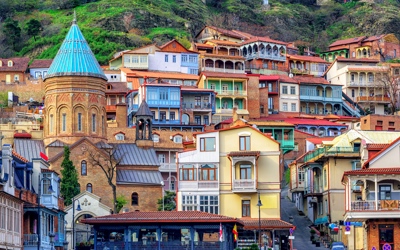
Collections
Old Tbilisi
12 Activities
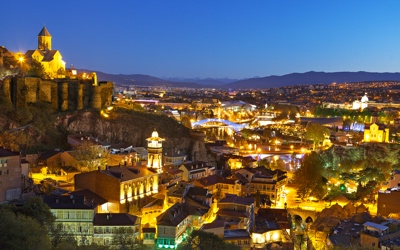
Collections
By Night
8 Activities
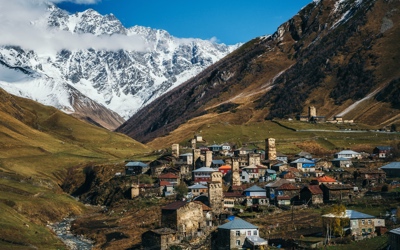
Collections
Georgia Tours
127 Activities

Collections
Sports & Leisure
10 Activities
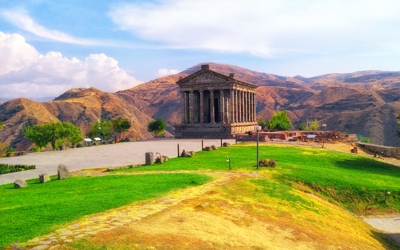
Collections
Armenia
16 Activities
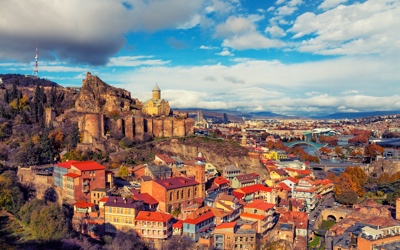
Collections
City Tour
82 Activities

Collections
Quad & Bike
6 Activities
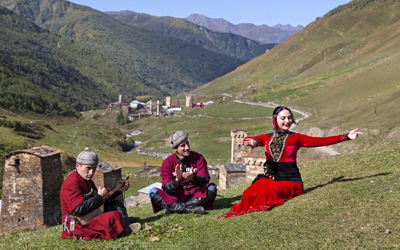
Collections
Original
39 Activities
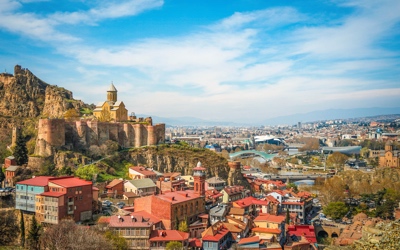
Collections
Walking Tour
45 Activities
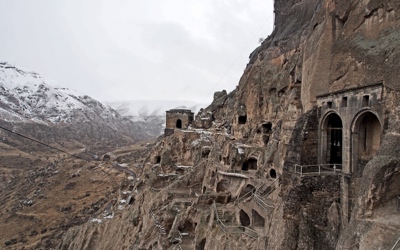
Collections
Vardzia
25 Activities

